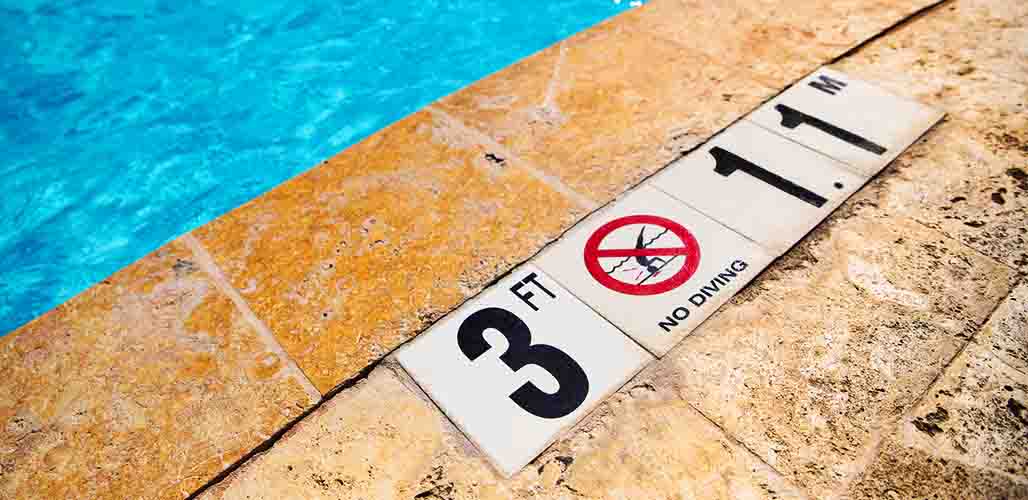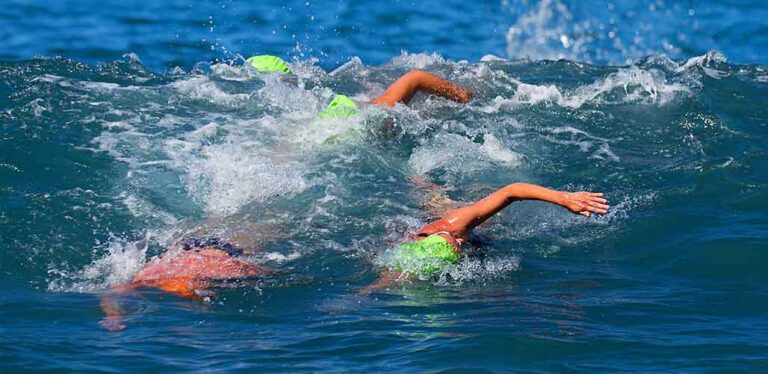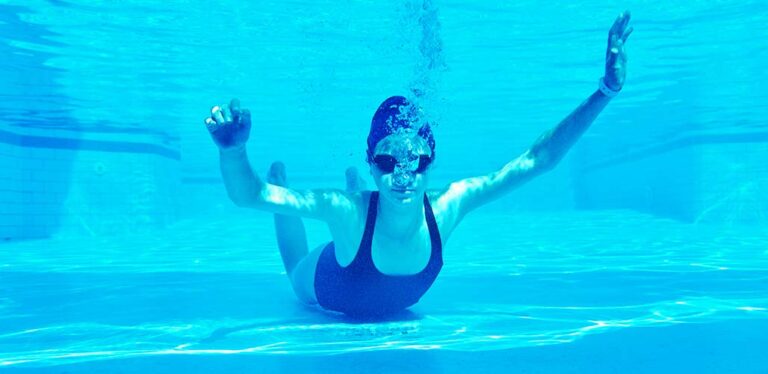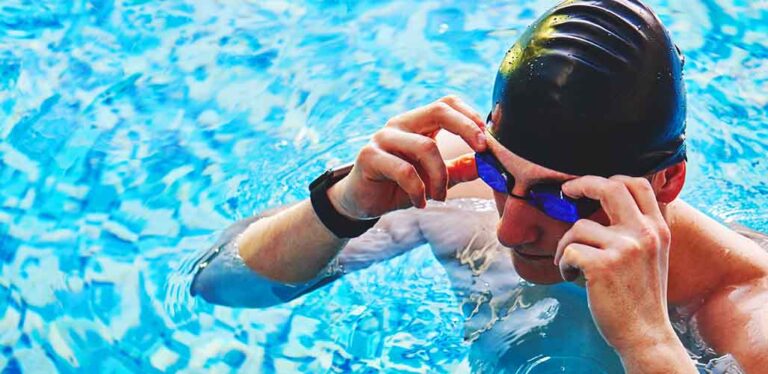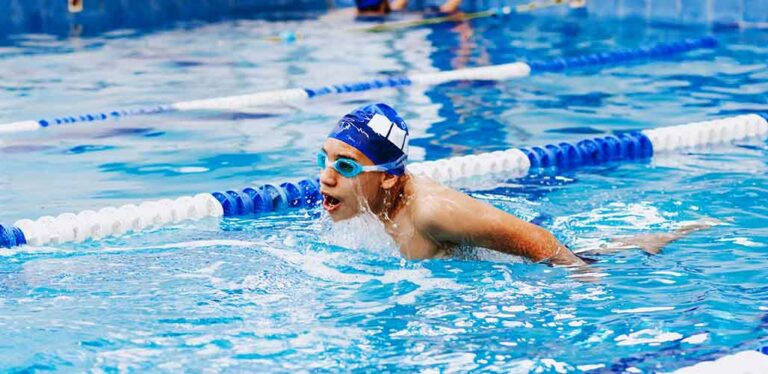What Is A Safe Pool Depth For Jumping Into?
As my kids gain confidence in the pool, I want to teach them how to judge a safe pool depth for jumping in. Jumping into water that is too shallow or too deep can be equally dangerous. A pool should be at least 4 feet, and preferably closer to 5 feet at the place where you jump in. But for entering the water in different ways (such as diving) the rules are different. It’s also important to apply a bit of common sense before you jump! And, I’ve picked up some valuable lessons for keeping my kids safe wherever they will be jumping into water.
Contents
Safe Pool Depth For Jumping: Why Does It Matter?
Is it overthinking to worry about the exact depth of water I and my children jump into? I don’t think so! Pools come in all shapes and sizes, and the depth of one pool is not the same as the depth of another. This means we can’t rely on being able to jump into any pool, at say, half way along, and be safe. Nor can we rely on looking into a new pool, and judging the depth by eye. The way light travels through water distorts our perception of it – in other words, things in water tend to look closer than they actually are.
Most importantly of all, jumping into too-shallow or too-deep water can be dangerous. So for our safety, it’s important to know what a safe depth of water for jumping into is, and to check the depth markers of new pools before we plunge into them.
What Are The Risks Of Jumping Into Shallow Water?
Put simply, the danger of jumping into shallow water is that you’ll reach the bottom of it faster. If you’re not prepared for the impact of hitting a solid surface, the impact can cause injuries to your feet, legs, knee joints and spine. In a worst case scenario, you could slip and knock yourself out on the side of the pool, putting you at risk of drowning.
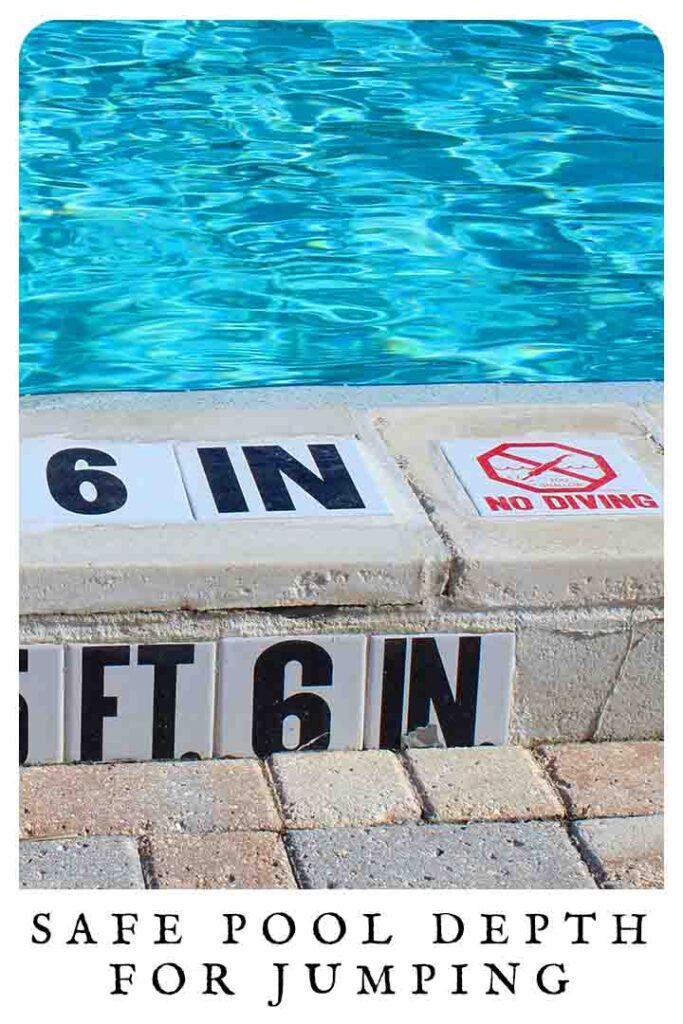
What About The Risks Of Jumping Into Deep Water?
Jumping into a deep pool can be just as dangerous. For non-swimmers and weak swimmers, the obvious risk is drowning before they can make it back to the side, or into shallower water. Children are especially likely to panic if they jump into water and discover they are out of their depth. Finally, an unheated outdoor diving pool can also get exceptionally cold, which can put our body into a state of shock – increasing the risk of drowning even for strong swimmers.
What Is A Safe Pool Depth For Jumping?
So, what is a safe depth of water to look out for? There are a few places we can for advice on this. Most pool contractors recommend that if you’re going to be jumping into your pool, it should be at least 4ft deep to prevent injuries. In their safety guidance, Swim England go a bit further, and recommend that adults are taught to jump into water at a minimum depth of 5ft. Children should learn to jump in at shallower depths, proportionate to their own height. But most importantly, children should always be supervised when playing in the water, even if they are strong swimmers.
Once my kids are confident about jumping into water that’s deeper than they are tall, and swimming back to the side, I’m going to teach them to always check that the water is at least 4ft deep before jumping in. Even though it will be safe for them to jump in at shallower depths for now, I know that they don’t always realize how quickly they are growing! And I don’t want them to misjudge when it becomes dangerous to jump into shallower water. In other words, I want to give them good advice for the future, knowing that I’ll be around to keep an eye on them in the present!
Is There A Legal Swimming Pool Depth?
There are no laws regarding how deep a private swimming pool ought to be. Depending on who is going to be using it, a backyard pool can have a mix of:
- Shallow water for toddlers to wade in.
- Mid-depth water that most grown ups can comfortably swim or stand up in.
- Deep water for diving into from the side.
But on the other hand, there are regulations about how deep public swimming pools need to be for hosting competitive events, and we can apply the same reasoning to make smart decisions about private pools as well.
- Water for diving into from blocks should be 6ft deep.
- Water beneath a rigid 4ft diving board should be at least 10.5ft deep, and ideally 11ft deep.
So don’t dive from the side of a pool less than 6ft deep. And don’t dive from a diving board without checking the water depth is at least 10.5ft. Always rely on depth markers at the side of the pool rather than judging it by eye, and if in doubt, lower yourself into the water from the side, rather than jumping, to test the depth.
Staying Safe By The Pool
Checking the water depth before jumping or diving in isn’t the only important way to stay safe at the pool.
- Basic pool safety equipment includes fences to keep out children from accidentally falling in, ropes and rescue floats for any unfortunate incidents, and pool alarms that go off if any unusual water activity happens.
- Keep a first aid kit nearby, and make sure everyone using the pool knows where it is.
- Don’t let children play on diving boards.
- Teach children how to jump into water safely with their knees tucked, and how to turn and return to the side of the pool. Get them to practice fully clothed as well as in their swimsuit, and get them to practice survival techniques for if they fall or jump into deep water and can’t get out. These include shouting for help, and floating on their back like a starfish.
- And of course, always, always, supervise children in the water.
Safe Pool Depth For Jumping – Summary
As a rule of thumb, a safe pool depth for an adult to jump into is at least 4ft deep. But you can apply some of your own common sense to this too. If you’re over 6ft tall, it’s probably best not to jump into anything less than 5ft of water! Always check the depth markers before jumping into an unfamiliar pool, rather relying on how deep it appears, or what other pools it looks similar to. Jumping into shallow or deep water can both be dangerous.
What Water Safety Lessons Are You Teaching Your Kids?
Let us know in the comments box down below.
More On Water Safety
- How to stay safe in cold water
- A beginners guide to staying afloat
- The starfish float
- What causes stomach pains after swimming?
- Is the Hudson River deep enough to swim in?
References
Gzik. Modelling researches of internal dynamic interactions in human cervical spine during jumping into shallow water. Scientific Papers of the Department of Applied Mechanics / Silesian University of Technology. 2005.
National Collegiate Athletic Association (NCAA).
Yılmaz et al. An Overview of Spinal Injuries due to Dive or Fall into Shallow Water: Our Long-Term, Double-Center Experience from the Aegean Coast. Emergency Medicine International. 2021.

